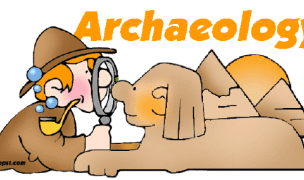 10 Terms
10 TermsHome > Terms > English, UK (UE) > Burning of Washington
Burning of Washington
The Burning of Washington was an incident during the War of 1812 between the forces of Great Britain and Ireland and those of the United States of America on August 24, 1814. After defeating the Americans at the Battle of Bladensburg, a British force led by Major General Robert Ross occupied Washington, D.C. and set fire to many public buildings. The facilities of the U.S. government, including the White House and U.S. Capitol, were largely destroyed. The British commander's orders to burn only public buildings and strict discipline among the British troops are credited with preserving the city's private buildings.
As a result to the defeat and exile of Napoleon Bonaparte in April 1814, the British were able to collect newly available troops and ships to prosecute the war with the United States. The Earl of Bathurst, the Secretary of State for War and the Colonies, dispatched troops to Bermuda, from where the blockade of the American coast and occupation of coastal islands had been overseen throughout the war. It was initially intended to use these forces to distract the United States government from its campaigns against Canada. Early in 1814, Vice Admiral Sir Alexander Cochrane had been appointed Commander-in-Chief of the Royal Navy's North America and West Indies Station. He already had plans for carrying the war to the United States by launching attacks in Virginia and at New Orleans. Immediately after the battle, the British sent an advance guard of soldiers to Capitol Hill. Major General Ross sent a party under a flag of truce to agree to terms, but they were attacked by partisans from a house at the corner of Maryland Avenue, Constitution Avenue, and Second Street NE. This was to be the only resistance the soldiers met within the city. The house was burned, and the British raised their Union Flag over Washington. The buildings housing the Senate and House of Representatives—construction on the central rotunda of the Capitol had not yet begun—were set ablaze not long after. The interiors of both buildings, which held the Library of Congress, were destroyed, although their thick walls and a torrential rainfall that was caused by a hurricane preserved the exteriors. Thomas Jefferson later sold his personal library of more than 6,000 volumes to the government to restock the Library of Congress. The troops turned northwest up Pennsylvania Avenue toward the White House. After the US government officials fled, the First Lady Dolley Madison remained behind to organise the slaves and staff to save valuables from the British. Her role increased her popularity, even as it was embellished by newspapers. The soldiers burned the president's house, and fuel was added to the fires that night to ensure they would continue burning into the next day. The smoke was reportedly visible as far away as Baltimore and the Patuxent River. In 2009 President Barack Obama held a ceremony at the White House to honour Jennings as a representative of slaves' contributions to saving the Gilbert Stuart painting and other valuables. "A dozen descendants of Jennings came to Washington, to visit the White House. For a few precious minutes, they were able to look at the painting their relative helped save". In an interview given to NPR, Jennings' great-great-grandson Hugh Alexander said, "We were able to take a family portrait in front of the painting, which was for me one of the high points." He confirmed that Jennings purchased his freedom later from the widow Dolley Madison.
- Part of Speech: proper noun
- Synonym(s):
- Blossary:
- Industry/Domain: History
- Category: American history; British history
- Company:
- Product:
- Acronym-Abbreviation:
Other Languages:
Member comments
Terms in the News
Featured Terms
phylum placozoa
Macroscopic, flattened marine animals, composed of ventral and dorsal epithelial layers enclosing ...
phylum cnidaria
Cnidarians. Hydras, hydroids, jellyfish, sea anemones, and corals. Free-swimming or sessile, with ...
share a term with millions
Share a term with millions of users around the world and increase your online visibility.Share a ...
oak
Genus native to the Northern Hemisphere with spirally arranged leaves, catkins for flowers and ...
Everest
The last but not least mount Everest. The Earth's highest mountain, with a peak at 8,848 metres ...
aglaonema
Genus of about 20 species of usually rhizomatous, evergreen perennials from tropical forest in Asia. ...
Robojelly
Robojelly is a hydrogen-powered robot desgined in the United States that moves through the water ...
Ferdinand Porsche
Ferdinand Porsche (3 September 1875 – 30 January 1951) was an Austrian-German automotive engineer ...
Marzieh Afkham
Marzieh Afkham, who is the country’s first foreign ministry spokeswoman, will head a mission in east ...
define1
Share a term with millions of users around the world and increase your online visibility.Share a ...
Contributor
Featured blossaries
stanley soerianto
0
Terms
107
Blossaries
6
Followers
Top Candies Of All Time
 10 Terms
10 Terms
Browers Terms By Category
- Biochemistry(4818)
- Molecular biology(4701)
- Microbiology(1476)
- Ecology(1425)
- Toxicology(1415)
- Cell biology(1236)
Biology(22133) Terms
- Muscular(158)
- Brain(145)
- Human body(144)
- Developmental anatomy(72)
- Nervous system(57)
- Arteries(53)
Anatomy(873) Terms
- Rice science(2869)
- Genetic engineering(2618)
- General agriculture(2596)
- Agricultural programs & laws(1482)
- Animal feed(538)
- Dairy science(179)
Agriculture(10727) Terms
- SSL certificates(48)
- Wireless telecommunications(3)
Wireless technologies(51) Terms
- Misc restaurant(209)
- Culinary(115)
- Fine dining(63)
- Diners(23)
- Coffehouses(19)
- Cafeterias(12)





